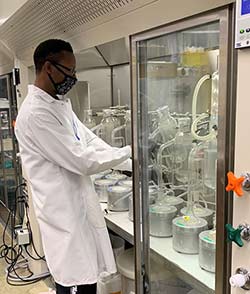Trace Organics Unit
We measure potentially harmful organic (carbon-based) compounds in liquids, solids, and fish tissues. Many of the compounds we test for are human-made and can be toxic.
Organic pollutant testing
 We test for federally recognized pollutants and hazardous substances including:
We test for federally recognized pollutants and hazardous substances including:
- Pesticides
- Polychlorinated biphenyls (PCBs) found in electrical equipment and transformers.
- Volatile chemicals – gasoline, paint solvents and dry-cleaning chemicals.
- Polycyclic aromatic hydrocarbons (PAHs) formed by incomplete burning of things like coal, oil, and wood.
The results of our tests are used to help judge the health of our lakes, streams, and Puget Sound. Our data also helps to protect groundwater aquifers and helps to maintain wastewater pipe systems and treatment plants.
Organic pollutant identification
We use Gas Chromatograph Mass Spectrometers (GCMS) and other specialized instrumentation to test for organic pollutants. We use them toidentify unknown organic compounds. We use a unique spectrum (like a fingerprint) to find a match in a library of organic compounds. This library contains spectrums for more than 600,000 potentially toxic organic compounds.
The results of our tests help to keep our environment and the public healthy by tracking levels of potentially harmful organic pollutants in waters, soils, and tissues.



 Translate
Translate